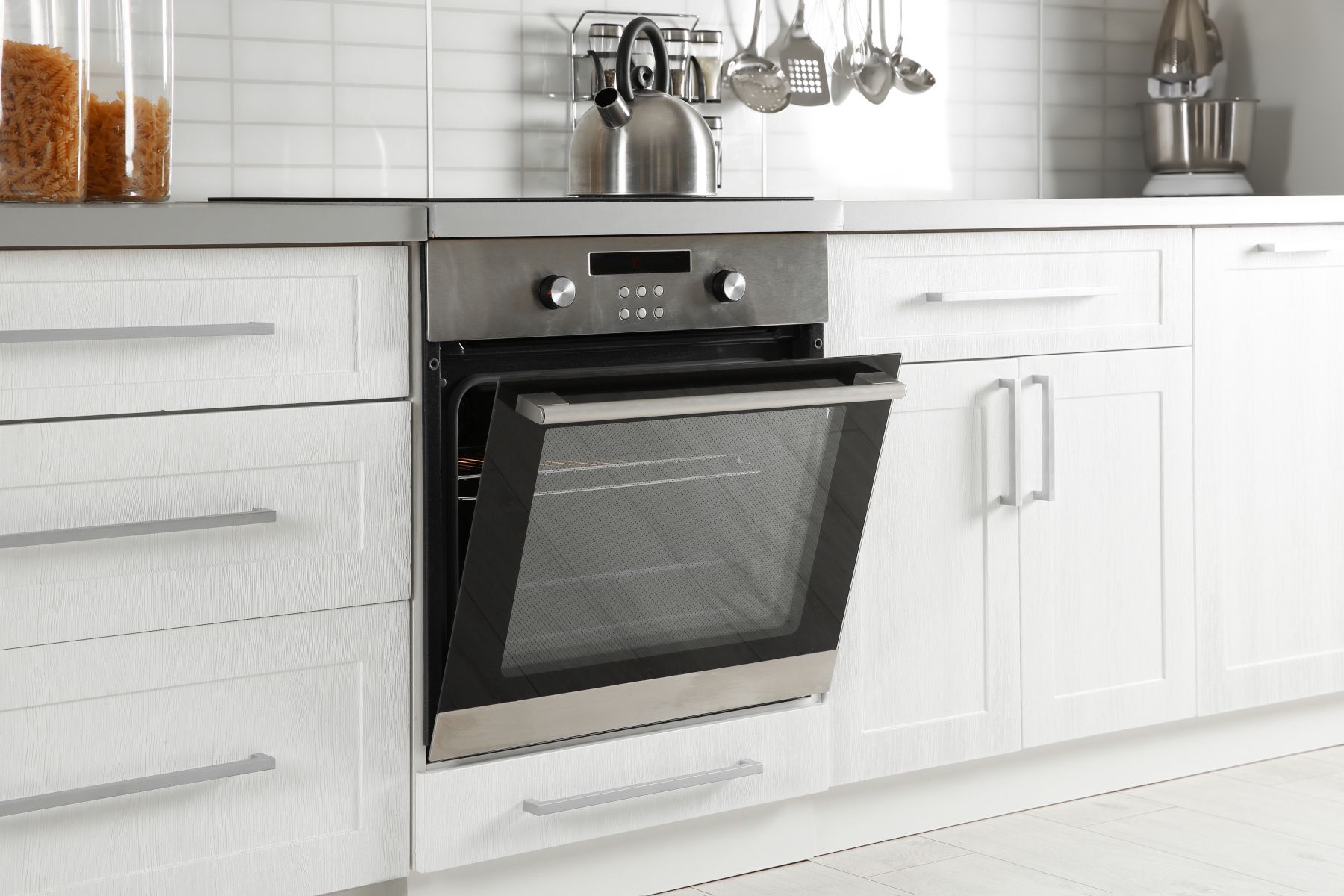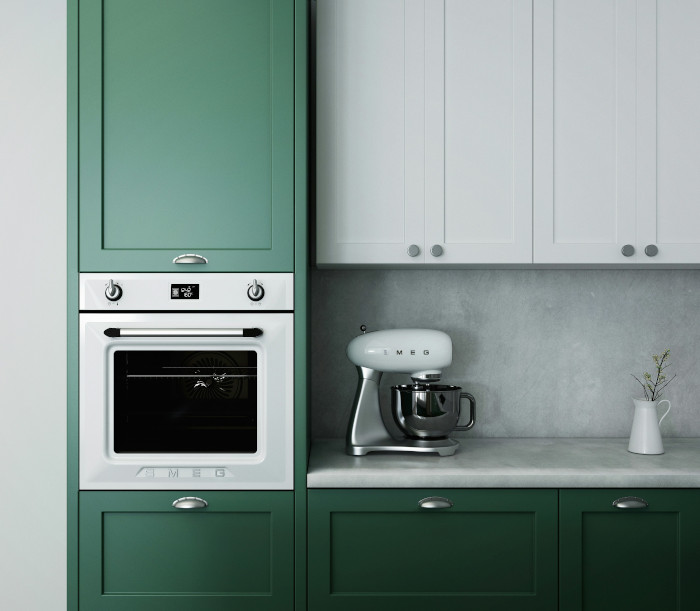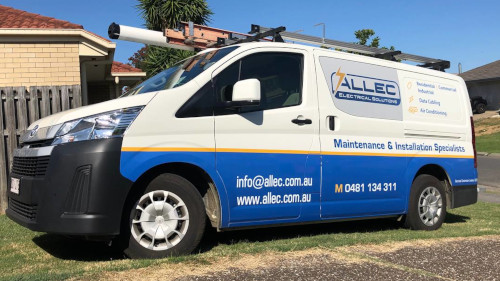Do You Need An Electrician To Install An Oven?

In most cases, a licensed electrician is required to install an electric oven, whether it is a freestanding unit or a built-in wall model. Installation typically involves more than simply plugging the appliance in, although a small number of low-power models are designed for direct plug-in use.
When Do You Need A Professional To Install An Oven?
Most ovens in Australia run on electricity, and only a small number use gas.
Most electric ovens need at least 3 kilowatts of power to work. That’s more than what a normal wall socket can give you (2.4 kilowatts). This means the oven has to be connected directly to your home’s main power, and in Australia, only a qualified electrician can do that.
You should also think about your oven’s warranty. If the instructions say it must be installed by a professional, and you don’t follow that, the warranty might not cover repairs if something goes wrong later.
Reasons To Call An Electrician For Your Electric Oven Installation:
Working with electricity must be done carefully and correctly. That’s why having a skilled electrician install your oven and handle all the wiring will help you feel safe and make sure everything meets the proper safety rules.
Hazard Protection
When putting in your oven, the last thing you want is to cause a fire or damage the wiring. You need a professional to install it so your home’s electrical system works well with the new oven. If your wiring isn’t good enough, it could cause bigger problems than just a broken oven.
Specialist Equipment
Electricians not only know how to install your oven the right way, but they also have the right tools to do it safely. Our team uses special equipment to make the whole job easier. Ovens are heavy, and if you’re not used to lifting them, you could hurt yourself. It’s safer to let the professionals handle it.
Efficient Installations
Even if you have the tools and strength to move your new oven, a home electrician can install it faster and better. Installing an oven can be tricky, and sometimes the instructions are hard to understand, leaving you unsure of what to do next.

Which Ovens Don’t Need An Electrician To Replace?
If you don’t want an electrician to install your oven, what else can you do?
It mostly depends on the kinds of food you like to cook and how much room you have in your kitchen.
Plug Socket Ovens
If you want a full-size wall oven, you can get one that doesn’t need special electrical work—but there won’t be many options.
Some built-in electric ovens can just plug into a regular power point because they use less power (2.2kW) and have a standard 10-amp plug.
That doesn’t mean they cook at lower temperatures, they can still heat up to 275°C, which is hotter than you’ll probably ever need for any recipe.
But if you have an old hardwired oven to remove, you’ll still need an electrician to disconnect it safely. Keep that in mind if you’re choosing a plug-in oven just to avoid paying for installation.
Small Appliances
If you only cook for one or two people, you might be able to do all your cooking using the cooktop and smaller kitchen appliances. Things like microwaves (especially convection ones), air fryers, toaster ovens, slow cookers, and multi-cookers can do a lot of the same jobs as an oven, just on a smaller scale.
But when you add up the cost and the bench space these appliances take, it might not be any cheaper or easier than just buying a new oven and getting it installed.
Gas Ovens
If you get a new gas oven, it will still need some electricity to turn on and light the flame, even though it cooks with gas. Some gas ovens can just plug into a regular 10-amp socket, but many have electric grills or cooktops that need to be hardwired.
For safety and to keep your warranty, you’ll always need a qualified gas fitter, and in many cases, you’ll also need an electrician.
Where Can I Find A Qualified Professional Electricians To Install An Oven?
To find a local electrician who can disconnect, remove, and get rid of your old oven, then install your new one, you can look online in a trades directory or if you’re in the area call ALLEC. If you do this, try to arrange it so the electrician can come soon after your new oven is delivered, so you’re not stuck with a big heavy box taking up space in your hallway.

How Long Does It Take To Install An Oven?
Installing an electric oven usually takes about 30 minutes to an hour, including removing the old one. Ovens are heavy, so you have to be very careful when taking out the old one and putting in the new one to stay safe and avoid damaging your kitchen floor or cabinets. That’s why it’s best to have more than one person do the job, it’s safer and faster.
Need an electrician?How Much Does It Cost To Install An Oven?
Depending on where you live in Australia and how many electricians are in your area, getting an oven installed can cost anywhere from a couple of hundred dollars to $350 or more in some states. Most electricians, like other tradespeople, have a callout fee of at least $100. You’ll probably want your old oven taken away too, so if you hire your own electrician, make sure their quote includes removing the old one, some might charge extra for that.
What Does The Electrician Need To Do?
Before the electrician can start, your new oven needs to be delivered.
First, they’ll check that the new oven will fit in the space you have (and if it doesn’t, there are steps to fix that). Then, they’ll turn off the power to your old oven and test to make sure it’s really off. After that, they’ll carefully take it out of the wall space without damaging your floor and disconnect it.
Next, they’ll put in the new oven, add the racks and trays, and secure it with screws or brackets so it doesn’t move. They’ll then turn the power back on and do a quick check to make sure everything is working properly.
Once they’re happy it’s all set up, they’ll show you how to use your new oven. Finally, they’ll clean up the boxes and rubbish, load them onto the truck with your old oven, and take everything away for recycling.
What If You Are Getting A Bigger Oven Or Changing Where It’s Placed?
What if you accidentally ordered a double oven when your old one was a single? It happens. That’s why it’s always a good idea to measure your old oven before buying a new one, at least the width and height, since you can’t measure the depth while it’s built into the wall.
If you’re upgrading to a bigger built-in oven than the one you have now, you’ll need a carpenter to change the size of the wall opening.
This isn’t included in a standard installation, which only covers swapping an old oven for a new one of the same size. Since an oven can weigh up to 50kg, it’s not always as simple as making the hole bigger, you might also need extra support built to hold the weight.
If you know you’ll need extra carpentry, stonemasonry work (like changing benchtops or cabinets), or electrical changes (like new cables or moving power points), it’s best to arrange it when you order your oven and installation.

Peace Of Mind
As you can see, installing an oven can be tricky, so let us handle it for you and make things easier.
Contact AllecFAQ:
Do You Require An Electrician To Install An Oven?
Yes, most of the time oven installation will require a licensed electrician, especially if it’s hardwired. Australian rules say a qualified electrician must do electrical work to keep things safe and follow the law. If you’re getting a gas oven, you’ll also need a licensed gas plumber.
Can I Install An Oven Myself?
If your oven is a small plug-in type, you might be able to replace and set it up yourself. But for built-in or hardwired ovens, the law says you must hire a professional, like a licensed electrician or gas plumber, to handle the power supply and complete the installation oven safely while keeping your warranty valid.
Are Ovens Hard To Install?
Installing an oven can be tricky, especially if it will require hardwiring or needs to be hooked up to gas. Professionals make sure the connections are safe, the oven is fitted securely, and everything lines up the way it should. They can also handle the removal of your old appliance. While installation costs vary, hiring an expert helps prevent damage and keeps you safe.
What’s The Difference Between A Freestanding Oven And A Built-In Oven?
A freestanding oven, sometimes called a stove, has both a cooktop and an oven in one unit, making it an all-in-one option you can put anywhere in the kitchen. A built-in oven is integrated into the kitchen cabinets, giving a smooth, stylish look and letting you place the cooktop wherever you want. Both types of installations can vary in price depending on the model and supply requirements.
What Can Happen If I Do My Own Electrical Work?
In Queensland, electrical safety inspectors check and take action against people doing electrical work without a license.
Doing unlicensed or DIY electrical work is illegal and dangerous. It can put you in contact with electricity, which can be deadly, not just for you, but also for anyone who uses the equipment later if it’s left unsafe. The danger might not show right away and could only appear when something goes wrong, or even build up over time.
There’s also a risk of major property damage from an electrical fire, and if it’s caused by illegal work, your insurance might not pay for the damage.
DIY electrical work counts as unlicensed work, which is illegal and can lead to fines of up to $40,000 for individuals. If it puts someone at risk of death, serious injury, or illness, the penalties can be as high as $600,000 for an individual ($3,000,000 for a company) or five years in prison.
For peace of mind contact ALLEC
